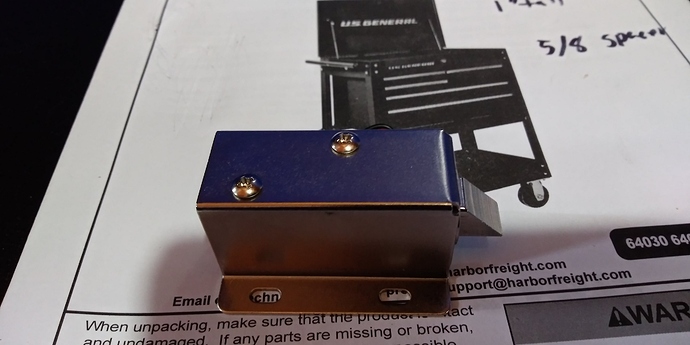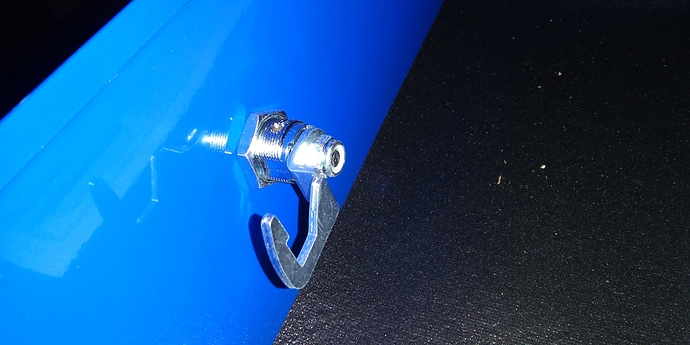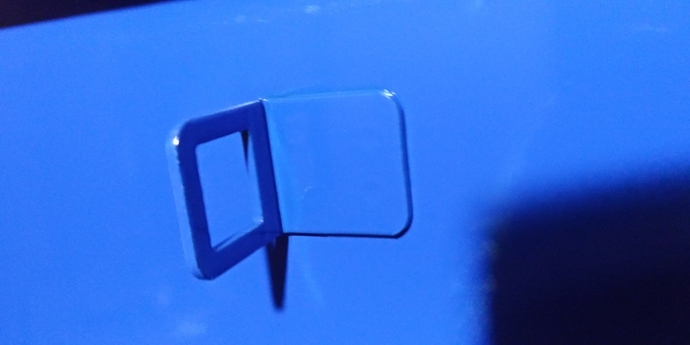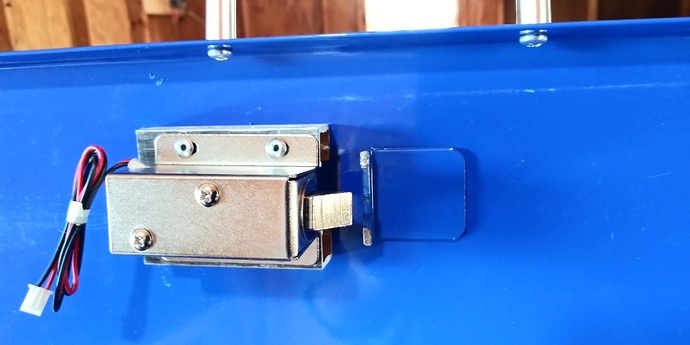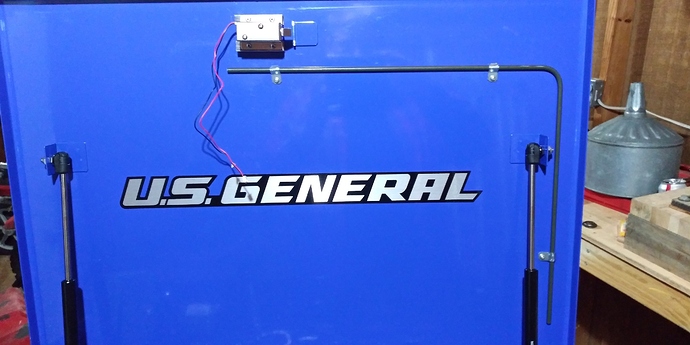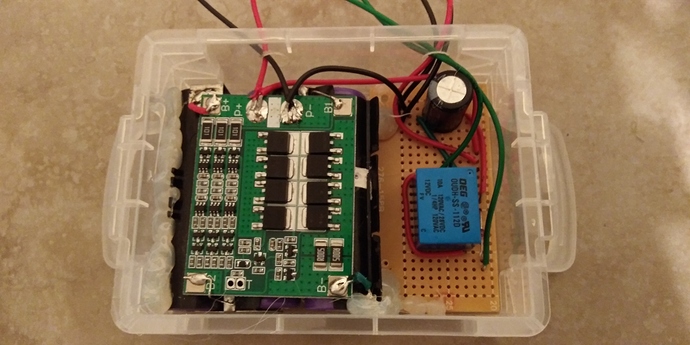This is really more of a hardware thing, with some of my random thoughts strewn throughout, but I wanted to present this as an idea of what an implant can be good for. Fair warning, gonna be lenghthy. My original use for an implant was to have a keyless toolbox. The project got started, then had to back burner for a bit. Let me catch you up, then I’ll show some progress.
Finding a candidate tool box to modify, and picking a mechanism to install into it, was tough. Most all boxes either use a rotating rod behind the lock that runs to the back of the box to move a bar with hooks, that grabs each individual drawer, or they use a hook and catch / loop right at the front of the box. My initial requirements were that it be both keyed (manual) and electrically controlled.
While I could have worked with the rotating rod in an electrical only setup, the dual purpose really killed that one off. There just isn’t a practical mechanism that can be easily adapted into this type of lock / rod.
Side note, while typing that out, I did think of a way, but it’d require scanning your chip for EVERY time you wanted to open a drawer. Little bit too aggravating.
This left me looking at the other type. Most of those operate off of a top lid opening concept. But even most of those still use a rotating rod style on the drawers below. In theory I could have electrically opened the top, to get a key to open the lower drawers. But that’s kind of a buzz kill.
I checked a bunch of boxes until I came across the Harbor Freight tool chests. They come in 3 or 5 drawer, with a top opening lid. But most importantly, they use spring loaded lock bars that automatically retract when the lid is opened. Furthermore the lock hook and loop is out in the open with plenty of room to mod it. Bought one in color BLUE.
At about this time I acquired a second requirement. I needed to be able to shut the top without Manually unlocking, or Electrically retracting the mechanism. I need it to shut easily, and be locked. Easy to lock, just scan back in when you want. This got me to thinking about door latches, and how they slide up a ramped surface. Went looking and whadya know, I found a solenoid just like that at sparkfun. 12v for 9.95 plus shipping.
